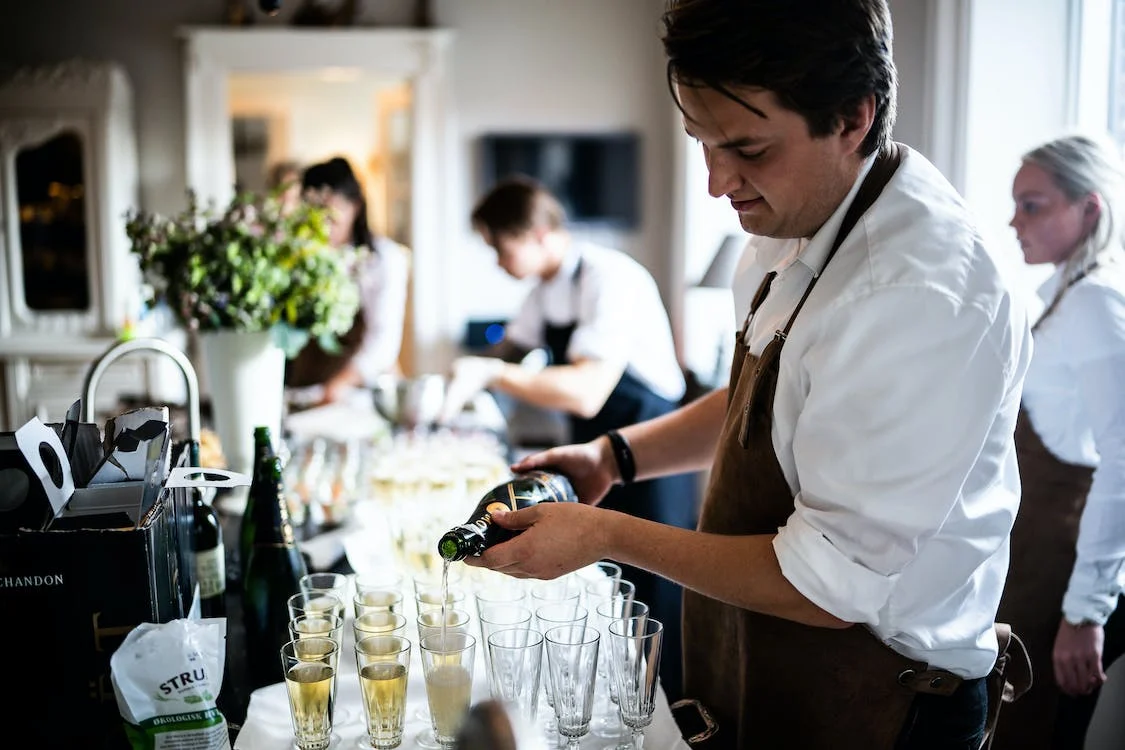Restaurants are not just meant for dining in, eat your food, and go away. It includes other basic things that seem to have little effect when talking about food and restaurants, but they matter a lot. The most important thing people look at apart from food in restaurants is courtesy. The service provided by the restaurant leaves an impression on people. There should be a certain degree of formality. Restaurant owners should ensure that people coming to their place feel a relaxed and warming atmosphere and are provided witha warm, friendly, and efficient service.
But how can restaurant owners ensure to provide the best service to their customers? It is done by giving good training to your workers. Teach them every good and polite gesture, and how to talk to their customers, maintaining a certain degree of formality. There is a complete training process about how to present themselves when customer/guest arrives at their restaurant to the time they leave the restaurant. This training is also referred to as a sequence of service.
Service Sequence Procedure
In simple words, the service sequence procedure can be explained as the order in which a waiter provides the services when a guest enters a restaurant to when he leaves the restaurant. In all this time, he is responsible for providing good and comfortable services to the guest. From the meal preparation to delivering it, satisfying service should be ensured with the first step of gust in the restaurant. The waiter should start focusing on basic services such as handling reservations, allocating the table, F&B service, etc. The waiter should make sure that this certain service sequence is followed so guests can have a pleasant experience, and he goes satisfied.
Step 1: How to Handle Reservations and Allocation of Table
Reservations for the table are made in some fine dine-in restaurants and specialty restaurants; you cannot make reservations in a coffee shop. While making a reservation, make sure to note down few important points such as the guest’s name, time of reservation, contact number, and name of the person who is booking the table, any special request/requirement, and table preference.
Reservations should be discussed and done before mealtime. Allocation of the table should be done before the guest’s arrival, and a short note made on a register would help you remember about the reservation and allocation of the table. In this way, all staff members will know that the specific table is already reserved so that there is no confusion, ensures the optimum seating levels at a restaurant, and everything runs smoothly. And these minor things show how professional you are at your work.
Step 2: Welcoming the Guest
When a guest arrives at the restaurant, greet them with a very polite gesture, and ask them if they have any reservations done. If yes, take them to the same table. Make sure that they are satisfied with their table, and if not, change the table even if they made a reservation for that specific table. The customer’s comfort must be your top priority. And if the guest made no reservations before coming, ask about their table preference and take them to it.
No matter how highly rated or low rated the restaurant is, their staff must know the certain rituals about how to treat their guests and welcome them with a warming gesture. Usually, the restaurant’s hostess or manager welcomes the guest, but this responsibility is not limited. Every staff member should ensure their comfort. Try to greet guests within 30 seconds of arriving, and keep on checking them within appropriate timings.
The manager or waiter attending the guest should have a clear and genial tone of voice and a good appearance with a smile. Welcome them with the greeting of the day, e.g., good morning/good afternoon/good evening. If the customer is a regular person, greet him with his name by adding ‘Mr.’ before. This sounds very welcoming and friendly.
Do not ignore guests in any situation. If the restaurant is filled with customers and all staff members are busy attending to other guests, at least acknowledge the guest that you are aware of their arrival and not ignoring them by simply passing a smile or a gesture to say that you will be with them in a minute.
Step 3: Seating the Guest
Leave it to the guest where they want to sit at which corner or table. Always ladies must be seated first. There are certain rules that you must know and follow when you are helping the guest to sit. Do not drag the chair; lift it a little bit. Dragging the chair makes a noise, which is quite uncomfortable and an ill-mannered thing to do.
Ask your fellows to help if you need more hands; ensure that your guest should not help to sort things out in any circumstances.
Step 4: Pour Water
After welcoming the guest and making them sit comfortably, the very next thing to be done in a sequence of services is to ask the waiter to pour water into the glass immediately. Ask for their preference of water, e.g., regular, mineral, aerated, or spring water.
Keep in mind that the jug you are pouring water from should be clean, and it should have sufficient water in it for the number of people on the table. Keep an underliner or the waiter’s cloth that is neatly folded under the jug so that water does not trip on the table. If the guest asks for mineral or spring water, open the seal in front of them. Serve the water with the right hand, and ladies should be served first.
Step 5: Take the Order
Usually, high-end restaurants present an aperitif card to take drink orders before giving them a menu card. This gives a good impression to customers. After that, present them with menu cards and give them 5-7 minutes to decide what they want for their meal. Go to them and ask if ‘May I take your order sir/madam?’
You should stand straight in a position where you can easily talk to the guests.
If the guests are still confused about ordering their meal, help them by telling your restaurant’s best-selling and suggestive selling dish. After finalizing the dish(s), take the order straight to the kitchen and ask for its immediate preparation. Take the menu card back from the guests and tell them the approximate time required to prepare their meal.
Step 6: Service of Beverage
Beverages are usually served first. Place the beverage on the right side of the guest. And while waiting for the food, serve the guest with bread, butter, and appetizers. The food should be served on time; guests should not be left unattended and waiting. After the food is served, there should be minimum intrusion and disturbance to the guest. When they seem to be finished with their meal, ask for a sweet dish, tea, coffee, or anything else they would like. If no, then start clearing the table nicely and with manners.
Step 7: Presenting the Check, Taking Feedback, and Giving a Farewell
Give them the bill and feedback form in a small and neat folderwhen they ask for it. A pen must also be given with it. Never ask for the tip; keep whatever they give. Just like you welcomedyour guests, help them in leaving too. You must thank and ask them to pay a visit again.
Conclusion
By following the above steps, no doubt, you can easily understand the service sequence procedure. A great business is one which keeps its customer happy. So, if you want to be successful, always hire the trained staff.

